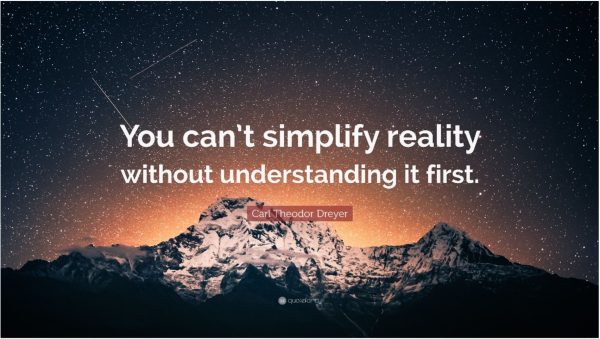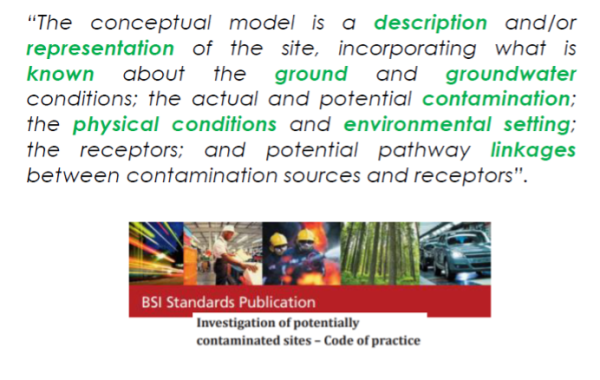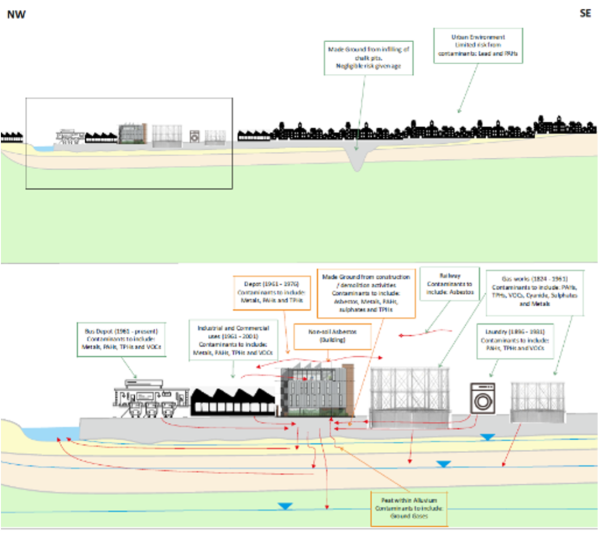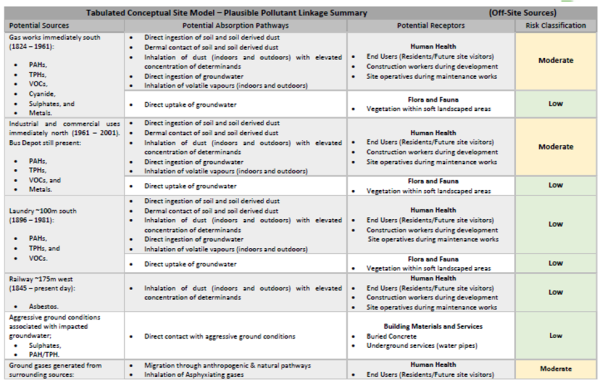The G&W Guide to… Conceptual Site Models
Geoenvironmental • Geotechnical • Industry matters
 A Conceptual Site Model IS an absolute pre-requisite for proper site assessment and maintenance of environmental control. It serves as a starting point for detailed site investigation, environmental risk assessment.
A Conceptual Site Model IS an absolute pre-requisite for proper site assessment and maintenance of environmental control. It serves as a starting point for detailed site investigation, environmental risk assessment.
 But what is a Conceptual Site Model?
But what is a Conceptual Site Model?
The term is best understood by looking at its individual components:
- CONCEPTUAL – An idea, not a physical model.
- SITE – An area in space and time.
- MODEL – Simplification of reality.
Below is the British Standards Institutes’ definition.

Conceptual Site Models (CSMs) form a fundamental part of a Phase 1 Site Investigation (Desk Study): Why?
- They organise data and information to a common standard
- They demonstrate a full understanding of a site. Assumptions/Uncertainties
- They drive the Risk Assessment process – Testing Hypotheses
- They aid communication within teams and stakeholders – especially if there are tight time constraints or people have not actually seen the site.


They can be:
- Drawings/Infographics – e.g. Cross Sections
- Tabulated/Matrix – e.g. Geotechnical risk registers
- Written
The CSM’s for contamination follow a Source – Pathway – Receptor approach… See our previous blog below.
The key to Conceptual Site Models
The overall process should be one of continual updating and challenging of the conceptual model. The modeller should not be afraid to reject the modelling approach adopted where this is found to be inadequate. Environment Agency NC/99/38/2 July 2001.
Finally a fully developed CSM will certainly help with obtaining regulatory approval for both remediation strategies and verification/validation reports.
Ground & Water follows all the key aspects of Conceptual Site Models for Potentially Contaminated Sites guidance, in order to communicate the situation more effectively to clients and regulators, especially when looking at the latter remediation and validation stages of developments.

 A Conceptual Site Model IS an absolute pre-requisite for proper site assessment and maintenance of environmental control. It serves as a starting point for detailed site investigation, environmental risk assessment.
A Conceptual Site Model IS an absolute pre-requisite for proper site assessment and maintenance of environmental control. It serves as a starting point for detailed site investigation, environmental risk assessment.